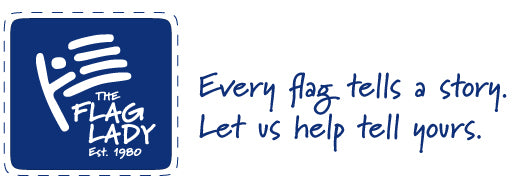The United States Flag Code is a set of federal regulations that establish guidelines for displaying, handling, and respecting the American flag. While it does not carry legal penalties for violations (except in certain military or governmental contexts), it serves as a guide to ensure that the flag is treated with the honor it deserves.
Origins and Purpose of the U.S. Flag Code
The Flag Code was adopted on June 14, 1923, by the National Flag Conference and later enacted into law by Congress on June 22, 1942. It outlines proper etiquette for displaying and handling the flag in various situations, ensuring that it is always treated with dignity.
Title 4, Chapter 1 – The U.S. Flag Code
§1. Definition
The flag of the United States shall have thirteen horizontal stripes, alternating red and white, with a blue union containing fifty white stars, representing the states of the Union.
§2. Time and Occasions for Display
- The flag should be displayed daily on or near the main administration buildings of all public institutions.
- It should be displayed on national and state holidays, as well as special occasions declared by the President.
- The flag should be displayed between sunrise and sunset, but when properly illuminated, it may be displayed at night.
- In inclement weather, the flag should not be displayed unless it is an all-weather flag.
§3. Manner of Display
- The flag should always be hoisted briskly and lowered ceremoniously.
- It should never touch the ground or any object below it.
- When displayed horizontally or vertically against a wall or window, the union (blue field) should always be at the top left from the viewer’s perspective.
- The flag should not be draped over vehicles, ceilings, or furniture.
- When displayed in a group with other flags, the U.S. flag should be at the highest point.
§4. The Pledge of Allegiance
The Pledge of Allegiance to the Flag should be recited standing at attention, facing the flag, with the right hand over the heart. Those in uniform should render the military salute.
§5. Prohibited Uses of the Flag
The flag should never:
- Be used as apparel, bedding, or drapery.
- Be used for advertising purposes or printed on disposable items like napkins or boxes.
- Have any marks, insignia, or writing placed on it.
- Be used as part of a costume or athletic uniform, except for military, police, fire, and patriotic organizations.
- Be dipped to any person or thing, except in ceremonies honoring a sovereign nation.
§6. Displaying the Flag at Half-Staff
The flag is flown at half-staff to honor the passing of certain government officials, military personnel, and other distinguished figures. It should be:
- Hoisted to the peak for an instant, then lowered to half-staff.
- Raised to full height again before lowering at the end of the day.
- Flown at half-staff upon the death of the President (30 days), Vice President, Chief Justice, or Speaker of the House (10 days).
- Lowered for other officials as designated by the President.
§7. Disposal of Unserviceable Flags
When a flag becomes worn or tattered, it should be retired in a dignified manner, preferably by burning in a respectful ceremony. Many organizations, such as the American Legion, VFW, and Boy Scouts, conduct flag retirement ceremonies.
Title 36, Chapter 10 – The Flag Code and National Observances
§301. National Anthem Etiquette
- When the national anthem is played, individuals should stand at attention, facing the flag, with the right hand over the heart.
- Those in uniform should salute.
- Civilians wearing hats should remove them with the right hand and hold them at the left shoulder.
Frequently Asked Questions (FAQs)
Is it illegal to violate the Flag Code?
No. The Flag Code is a set of guidelines rather than enforceable laws, and there are no penalties for violations. However, it is widely respected as a patriotic duty.
Can the flag be flown in bad weather?
Only if it is made of all-weather material.
Is burning the flag illegal?
No, the Supreme Court ruled in 1989 that flag burning is protected under the First Amendment as free speech.
Can I wear a flag as clothing?
While not illegal, the Flag Code discourages using the flag as wearable apparel.
Conclusion
The U.S. Flag Code is a powerful symbol of national unity and pride. By following these guidelines, we show our respect for the flag and the values it represents. Whether flying it at home, in a business, or at a public event, always handle the flag with honor and reverence.
For those looking to retire their flags properly, consider participating in flag retirement programs, which ensure that old flags are given the dignity they deserve.

